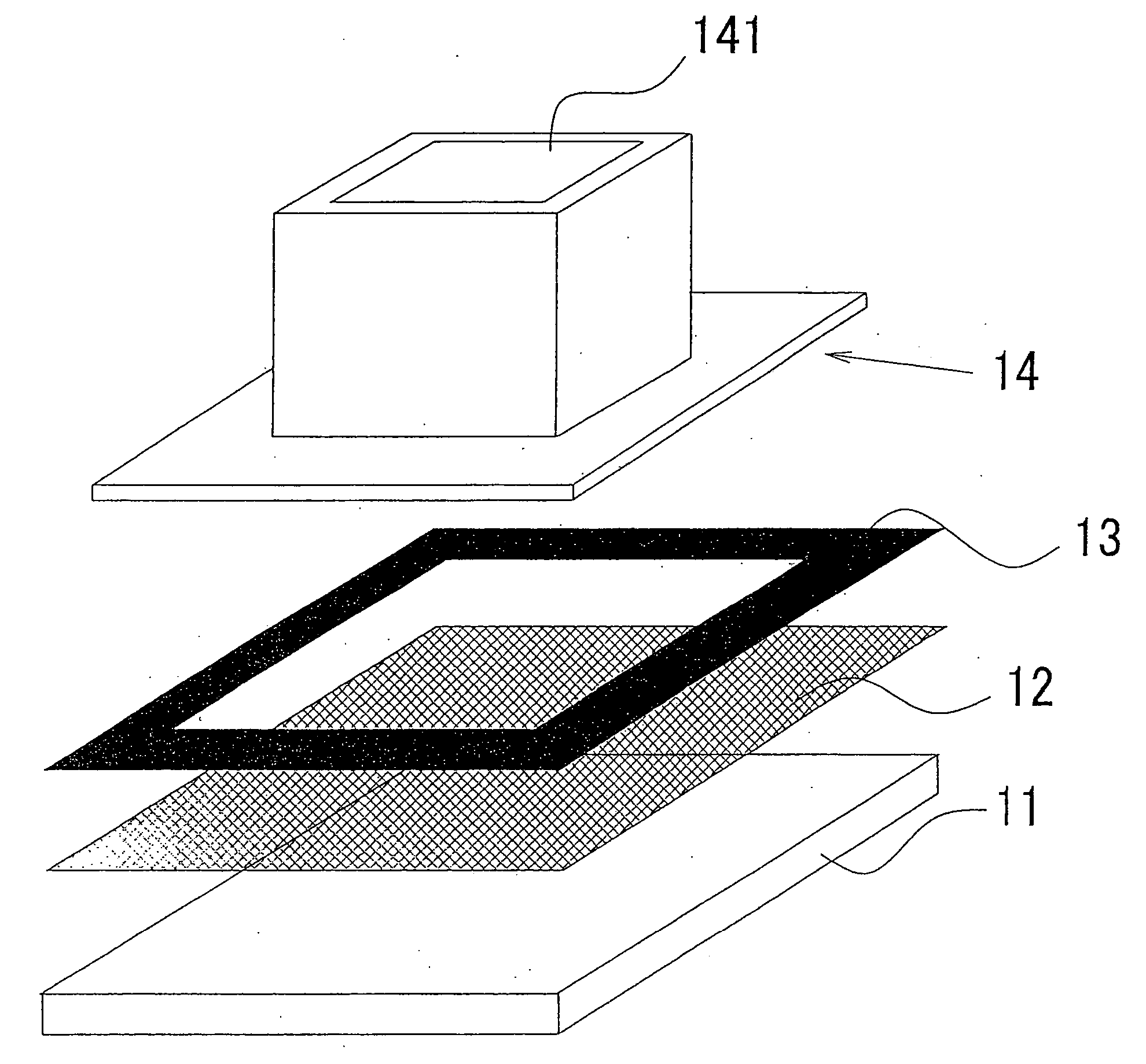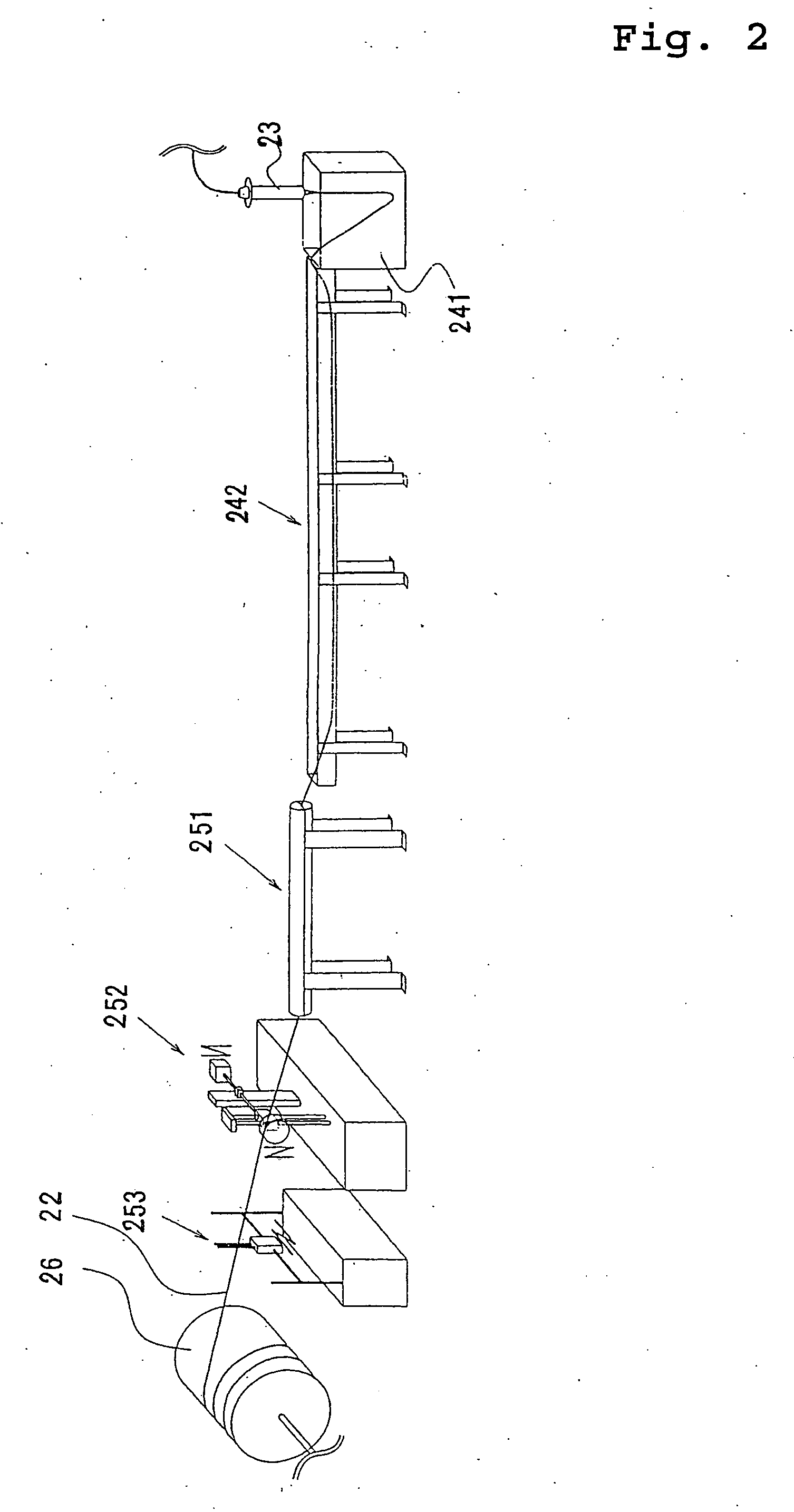Method of preventing adhesion of membranous tissue
a membranous tissue and adhesion prevention technology, applied in the field of collagen-containing adhesion preventive membranes, can solve the problems of patients dying, poor prognosis, and damage to the fundamental function of the organ, and achieve the effect of improving degradation resistan
- Summary
- Abstract
- Description
- Claims
- Application Information
AI Technical Summary
Benefits of technology
Problems solved by technology
Method used
Image
Examples
example 1
Preparation of Adhesion Preventive Membrane (2-Layered)
(1) Preparation of Nonwoven Fabric Layer Made of Collagen Fibers
[0204] An aqueous 7-wt % acid-solubilized collagen solution (150 ml) was extruded into 3 l of a coagulation bath of 99.5-vol % ethanol (produced by Wako Pure Chemical Industry Co., Ltd., reagent grade) and dehydrated and coagulated. Thereafter, the obtained collagen filament was laminated in accordance with the method described in JP 2000-93497 A to obtain a collagen nonwoven fabric. Then, the obtained collagen nonwoven fabric was air-dried in a clean bench, and then subjected to a thermal dehydration crosslinking reaction as it was in a vacuum drying oven (produced by EYELA Co., VOS-300VD type) under high vacuum (1 torr or less) under the conditions of 120° C. for 24 hours.
[0205] After completion of the crosslinking reaction, to fill the gaps between the filaments of the crosslinked collagen nonwoven fabric, an aqueous 1-wt % collagen solution was coated on the...
example 2
Preparation of an Adhesion Preventive Membrane
[0208] Collagen fibers obtained by extruding 150 ml of an aqueous 7 wt % collagen solution in a coagulant bath of 99.5 vol % ethanol (produced by Wako Pure Chemical Industry Co., Ltd., reagent grade) were laminated by a conventional method to obtain a nonwoven fabric layer made of collagen fibers. Then, after air-drying it in a clean bench, the obtained nonwoven fabric layer made of collagen fibers was subjected to a thermal dehydration crosslinking reaction as it was in a vacuum drying oven (produced by EYELA Co., VOS-300VD type) under high vacuum (1 torr or less) under the conditions of 120° C. for 24 hours. After completion of the crosslinking reaction, the nonwoven fabric layer made of collagen fibers was dipped in an aqueous 0.1-N sodium hydroxide solution to perform a neutralization treatment, washed with distilled water, and then air-dried in a clean bench. After the washing, the dried nonwoven fabric layer was coated with the fo...
example 3
Preparation of an Adhesion Preventive Membrane (2-Layered)
[0210] By using a technique similar to that used in Example 1, one nonwoven fabric layer made of collagen fibers, and one compressed sponge-like coating layer containing a mixture of collagen and hyaluronic acid were each prepared. The sponge-like coating layer containing a mixture of collagen and hyaluronic acid was bonded to one surface of the nonwoven fabric layer made of collagen fibers in a manner similar to that in Example 1, and a thermal dehydration crosslinking treatment was performed thereto in a vacuum drying oven (produced by EYELA Co.: VOS-300VD type) under high vacuum (1 torr or less) under conditions of 110° C. for 24 hours. In this manner, an adhesion preventive membrane of a total thickness of about 2 mm with a two-layered structure, i.e., the nonwoven fabric layer made of collagen fibers bearing enough strength to endure suture in the center, and the sponge-like coating layer containing a mixture of collage...
PUM
| Property | Measurement | Unit |
|---|---|---|
| thickness | aaaaa | aaaaa |
| thickness | aaaaa | aaaaa |
| diameter | aaaaa | aaaaa |
Abstract
Description
Claims
Application Information
 Login to View More
Login to View More - R&D
- Intellectual Property
- Life Sciences
- Materials
- Tech Scout
- Unparalleled Data Quality
- Higher Quality Content
- 60% Fewer Hallucinations
Browse by: Latest US Patents, China's latest patents, Technical Efficacy Thesaurus, Application Domain, Technology Topic, Popular Technical Reports.
© 2025 PatSnap. All rights reserved.Legal|Privacy policy|Modern Slavery Act Transparency Statement|Sitemap|About US| Contact US: help@patsnap.com



